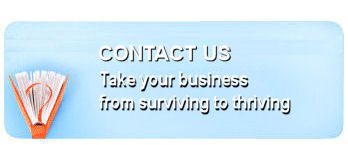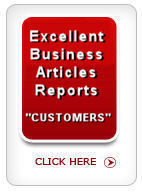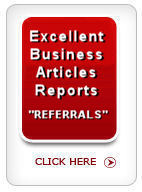| |
Increase Sales Conversion
Our focus is helping you achieve your business goals – be that a certain profit level, a quality of life or the ability to sell the business and retire. For any of these goals, creating a consistent, high level of profits is critical. So we’ll be reviewing the 5 Steps to Increased Profits framework – focusing on one of the five steps.
As a review, the five key profit-generating areas are: Lead Generation, Conversion Rate, Average Dollar Sale, Average Number of Transactions, and Profit Margins. Those areas are highlighted in the following equation:
Lead Generation x Conversion Rate = # Customers x Avg. Dollar Sale x Avg. # Transactions = Revenues x Profit Margins = Profits
This articles we’re focusing on Sales Conversion. You may remember that NextLevel Business Development Consulting has developed and proven systems to help you increase your sales conversion.
Here are my top seven ways to increase sales conversion:
-
Written Guarantee: This is where you write a guarantee addressing the customer’s key frustrations in buying from you. For example, a hairdresser that guarantees ‘you will like your haircut and so will 98 per cent of your friends'. For an attorney the guarantee could be a fixed price -- You'll get for patent filed for $5k.
-
Use Sales Scripts: These are absolutely essential whatever business you’re in. Once you find the right (or very close to right) way to sell something to someone, why change it? Write down exactly what you said, and then do that every time. And make sure your team does the same. Every customer is different, but the objective is always the same: match the product to the buyer. You should have scripts for everything – from answering the phone to saying good-bye.
-
Define Your Unique Value Proposition: If there’s nothing different about you, people will only buy from you because of convenience, or price, nothing more. Added to that, you’ll never be able to raise your prices; if there’s anyone doing it cheaper, people will buy from them. You need to work out what is special about you, and then make a big deal about it.
-
Print Benefits and Testimonials: This is a sheet (and a page on your website) that you can give to every person who meets with you. It contains the 4 most important things about your product, or the 7 reasons yours is a better choice for them. Also include testimonials on it – that is, direct quotes from your past customers about how good you are. A video testimonial is the most powerful way of communicating all that you do for your customers.
-
Build Trust and Rapport: There are some simple things that you can do to make sure this happens. First, always use their name, and make sure you introduce yourself using your full name. Ask them questions, and genuinely listen to the response – these are your clues. Do your best to help them with ideas and advice. If you believe in your product/service, then you know that one of the best ways to help them is to sell them your product/service.
-
Provide Something Extra: To seal the deal, throw in something they didn’t expect – something that gives them the perception that they are getting a great deal. Then place a time limit on it, which pressures them into making a decision. Make sure it’s something that they will value highly which doesn’t cost you very much -- i.e.: high perceived value, low cost to you.
-
Provide Quality Products: People will buy quality when it’s affordable. By providing the best, you put yourself a cut above everyone else.


Lead Generation
This articles we’re focusing on Lead Generation. You may remember that NextLevel Business Development Consulting has developed and proven systems to help business you increase your lead generation. Over the 20+ years in which we have been coaching, we have collected 21 Truths about Lead Generation. We like to share the top seven.
-
Separate suspects from prospects: Too many advertising/promotion dollars – and too much time – are spent on people who will never buy. Unless your lead generation advertising weeds these people out, it’s not working effectively. It’s putting a strain on those who process and follow up on leads. The media you select, the offers you make, your creative strategy, and even your tone all play key roles in drawing out high potential prospects and screening out suspects.
-
Sell the next step harder than you sell your product or service: The whole objective of lead generation programs is to begin the sales process, not to complete it. Your initial direct mail or e-mail should push for action on the next step – sending for more information, a free sample, a free analysis. Once you have qualified prospects, you can concentrate on a full presentation of product benefits, features, and applications.
-
Construct meaningful, actionable tests: No direct response program – whether executed in direct mail, e-mail print, online or broadcast – can be improved without valid testing. Make sure you test the most significant factors first – lists/media and offers. Once you have a read of results, react quickly and incorporate them into your program. Your results analysis should not only include number of leads and cost per lead, but cost per appointment and per sale. Making decisions on lead costs alone can be disastrous.
-
Once is not enough: Give suspects more than a single time to qualify themselves. No matter how intrusive your direct mail package, email, print ad or online ad, your target may miss it the first time around. Give prospects multiple opportunities to say “Yes” to your offer – whether that means getting additional information, a price quote, or a call/visit from your sales representative. The more narrowly defined your market, the more time you have to spend on each prospect.
-
Understand their “hot buttons”: Executives are much more often concerned about their time than about saving a few dollars. Direct mail/e-mail efforts that don’t demand a lot of time and that demonstrate how the product/service can save the recipient time works very well to management segments. If the savings are enormous, that’s a different story. And the best story is getting the recipient to believe responding is the first step in MAKING BIG MONEY. Middle managers may be more concerned about preservation (of their jobs) and about making a safe, unquestionable choice.
-
Use testimonials and case histories: Aside from the credibility they imbue, they provide the prospect with applications and usage guidance. Large corporations should select testimonials or case histories that emphasize the company’s ability to provide fast, personal service. Smaller marketers should use endorsements reflecting on the company’s strength and stability. Include testimonials which underscore how customers were rewarded by finding out more when they were prospects.
-
Plan separate, creative strategies and offers for different levels of decision-makers: Even if you’re prospecting within a specific industry, copy and offer – and sometimes graphics – must change by function and by the objective of your communication. The highly technical approach you make to the head of the IT department will not work in addressing the CEO. And the CEO’s possible interest in your product/service will differ from the CFO’s.

Increase Your Conversion Rates and Boost Sales
Here are a few ways of boosting your conversion rate:
Charge For Normally Free Advice:
This will set you up as the expert, and put you in a far better position when it comes to crunch time. You may not deal with as many prospects but, every one you do deal with is well qualified.
Here are a few hints and tips on charging for expert advice:
A Gift Cheque Towards Purchase:
Include a gift cheque with your letter which people can spend on anything you have to offer. Works best when your product is mid-priced, and the voucher accounts for about 10-15 per cent of the purchase price. Make the voucher a dollar amount, not a percentage though.
Here are a few hints and tips on using gift checks to drive sales:
Always Have Stock On Hand:
That means you can say to people “And of course, you can take this home today. I have one in stock.” This makes it far more immediate for people. There’s no bigger turn-off after getting excited by a product to then be told there’s a two week waiting list.
Here are a few hints and tips on ensuring you have enough stock-on-hand:
-
Always have enough stock so people can take one home immediately.
-
If you are out of stock and the product allows, offer them a demo which will be replaced when new stock arrives.
Offer Exclusivity:
Letting people know that they have the opportunity to be your only client can make them feel excited. It can also have the impact of making them want to buy now to sure it up.
Here are a few hints and tips on how you can use the prestige factor and offer exclusivity:
-
If you can offer exclusivity, make sure you get a premium price for the prestige factor.
-
Ensure you can keep the promise if you make it!
Allow Pre-Payment:
Allow people to pay before the goods have arrived. You may even want to offer a discount, or an added value product to encourage this. The department stores use this technique very successfully be offering lay-by
Here are a few hints and tips on allowing pre-payment as an option:
-
Offer some kind of incentive, it helps with planning your inventory.
-
Make sure the offer features prominently in your advertising.

Are You Neglecting Your Conversion Rates?
Of the five areas in which we coach our business owners, increasing their conversion rate is generally the second easiest and most cost effective to help improve sales. Despite conversion rates being one of the easiest areas to focus on and improve in a business, from our experience as Business Coaches, it is also the one most neglected by business owners.
Here is how you can change that!
Do you realize that if your business has a conversion rate from lead to sale of 20 percent and we help increase that conversion rate to 30 percent - this is not just an increase of 10 percent; it’s a 50 percent increase. This in turn means that your revenues (on an average) would increase by 50 percent.
I bet that I now have your attention.
The key to increasing your conversion rate is to test and measure it at every level of your team’s sales process. To do this you need to identify and break-down your entire sales process into the smallest “chunks” possible so that you have a series of standardized “steps” your team performs with clients as it takes them through the sales process.
Measuring the conversion rates from step 1 to step 2, step 2 to step 3 and so on- is key to measuring where your conversion rate is - great, good or indifferent!
Have every team member measure their own conversion rates so that you identify individual conversion rates of each of your team members and then collate all these ratios to obtain an overall team conversion rate for your sales. Next identify where the largest “bottlenecks” are for individuals and the team to work on improving the conversion rates between these steps first.
You may be wondering, “How do I do that?” Well, there are many ways you can do this, which will be the subject of my upcoming articles. It is important that you understand that to be able to even identify the fact that you need to work on your conversion rate in specific areas requires you to first test and measure it. It is the key to increasing conversion rates as I am sure you have heard before...You can only manage effectively what you are measuring.

|
|












